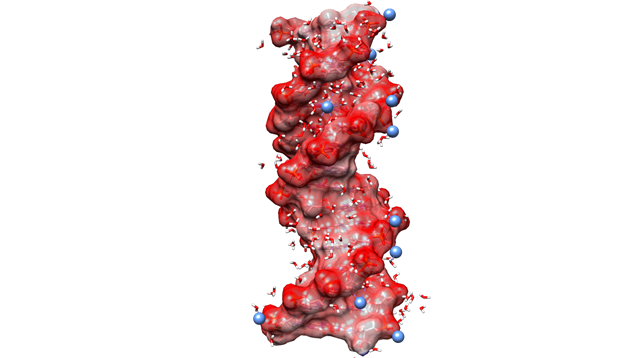The complex interaction of electrical forces between a molecular surface and its immediate environment is critical to the structure and function of biological macromolecules and interfaces. Water as an electric dipole and natural biological medium plays a particularly important role here. Electrical interactions and hydrogen bonding between the polar and charged structural elements on the surface of the DNA and the first layers of the surrounding water determine the structure of the double helix. The distances between the molecular units are only fractions of a nanometer, the entire system fluctuates on a time scale that is shorter than 10-12 seconds. An observation of this process requires molecular probes at the interface between DNA and water as well as measurement methods that can visualize ultrafast fluctuations.
Scientists from the Max Born Institute have for the first time used molecular vibrations of the DNA backbone as probes to make structural fluctuations in the DNA surface directly visible. For this purpose, they used the so-called two-dimensional infrared spectroscopy in the femtosecond range, with which changes in the absorption of vibrations can be traced by fluctuating forces. The natural structure of the DNA-water interface is preserved, the method is non-invasive.
